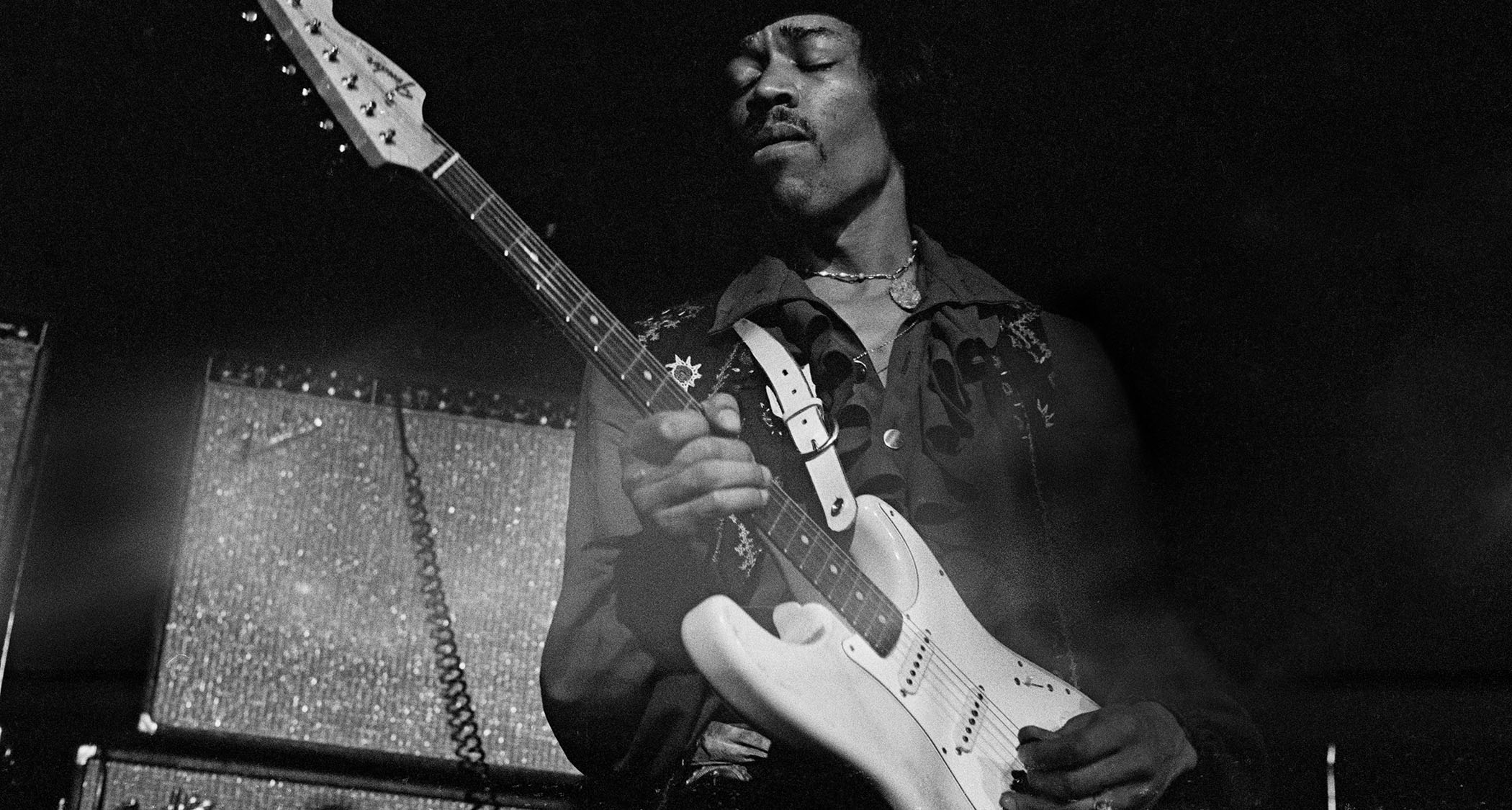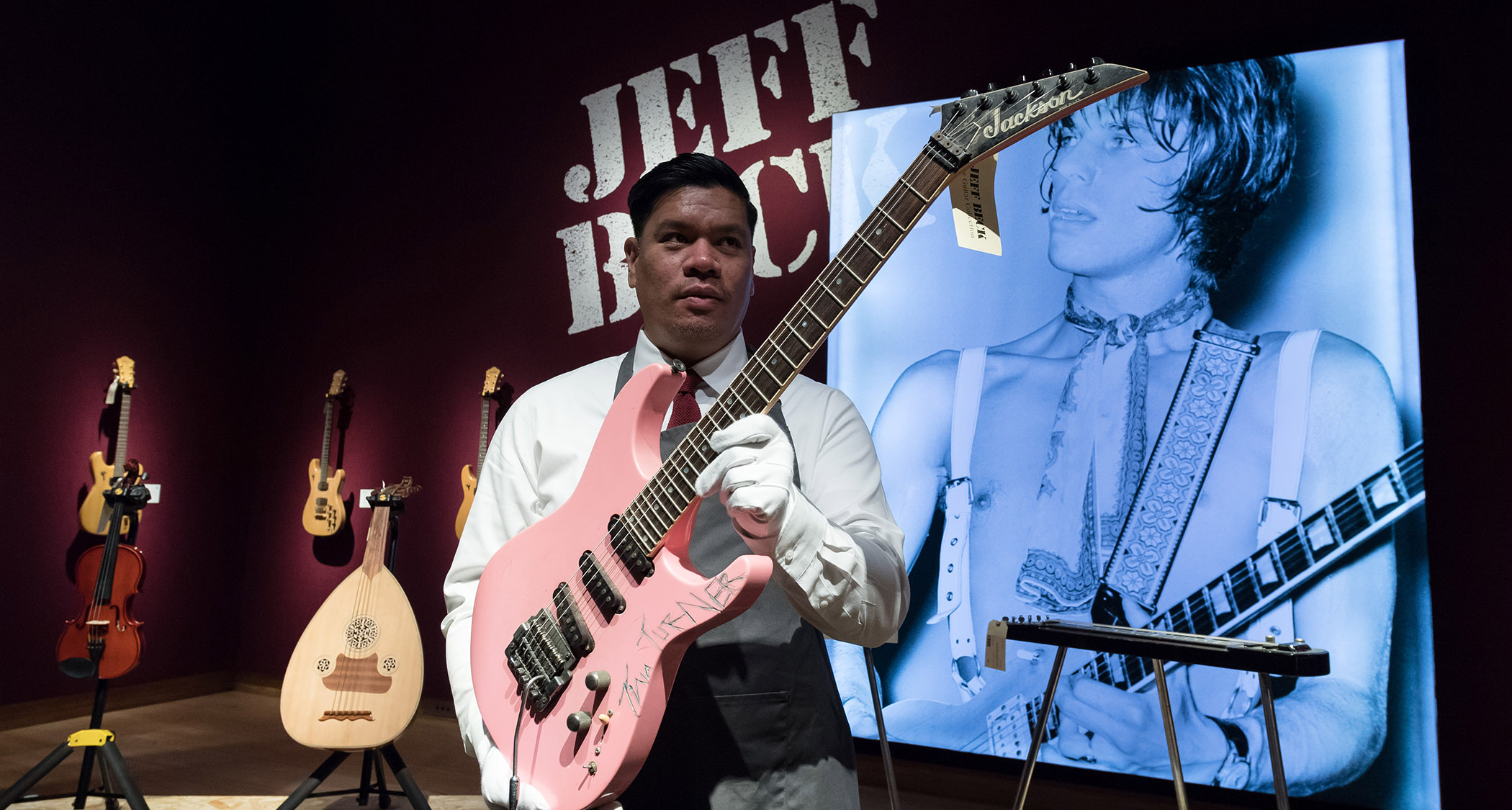“There are long winding passages, it’s almost womb-like… That’s something that would have really spoken to a guy like Jimi”: How Jimi Hendrix masterminded the ultimate sonic playground where Led Zeppelin and The Clash came to record
A new boxset full of previously unreleased recordings shines a light on Hendrix's bold new vision for Electric Ladyland Studios. Sadly, Hendrix would die before being able to make full use of it, but Jeff Slate, who worked on this new release, tells us how the NYC studio was integral to his plans

The Generation blues club in Greenwich Village, New York, was a favourite hangout of Jimi Hendrix, a place where he could enjoy the music he loved and jam with musicians he respected.
He liked it so much he bought the property in November 1968, with the idea of installing some recording equipment to capture live recordings by himself and others. He was soon persuaded by his producer, Eddie Kramer, to turn the space into a fully fledged recording facility, and the concept of Electric Lady Studios was born.
Work started on converting the space into a recording studio in January 1969, but due to unforeseen setbacks and logistical complications, Hendrix wouldn’t start recording there until June 1970. When he did, it became the perfect place for him to develop the tracks for his next project.
At this time, Jimi was still riding high on the success of his double album Electric Ladyland, his third with the Jimi Hendrix Experience, released in October 1968. This sprawling self-produced set showcased Hendrix’s extraordinary vision for the future of rock, incorporating blues, psychedelic pop, funk and soul, and blending them all into a sound and style uniquely his own.
The result gave Jimi his first number one album in the US, and he was able to command enormous fees as one of the hottest acts on the touring circuit.
However, recording tracks for his next album in studios like The Record Plant and Hit Factory proved expensive and draining. With his own studio, Jimi felt in full creative control for the first time in his career. He brought all the existing tapes from previous sessions to Electric Lady Studios, in readiness for his next project, provisionally titled Straight Ahead.
He envisioned this to be another double album with high ambitions for the quantity and quality of the music. Gone were the time and budget restrictions that came with working in commercial studios. Now he had the luxury to explore his ideas in a relaxed and inspirational environment.
All the latest guitar news, interviews, lessons, reviews, deals and more, direct to your inbox!
A genius at work
Total Guitar spoke to Jeff Slate, recording artist, guitarist and writer, who worked with the Hendrix estate on the new six-disc release, Electric Lady Studios: A Jimi Hendrix Vision.
“At that time, Jimi was constantly on the road,” says Jeff. “He was having to be creative in his off hours, which was minimal. Now he had his own studio, he could just stretch out, jam with musicians that inspired him, and work out his ideas.”
Electric Lady Studios became the environment Jimi had been dreaming of all along: a workshop and laboratory for developing his music. “There were little rooms in there where he could find a nook or cranny to hide away in, with a guitar or microphone, and noodle until he found what he was looking for,” says Jeff. “It was invaluable creatively.”

The newly released boxset includes 39 tracks (38 of which were previously unreleased), offering incredible insights into Jimi’s creative process.
We’ve heard other versions of some of these tracks on posthumous albums like The Cry Of Love (1971), Rainbow Bridge (1971), Voodoo Soup (1995) and First Rays Of The New Rising Sun (1997). But here we get a treasure trove of unreleased demos and outtakes that reveal his working practices in extraordinary detail.
Hendrix fans now get to hear snippets of Jimi discussing the tone of his guitar and the musical arrangements of songs he was writing. The alternate takes let us hear his different approaches to improvised solos, and provide invaluable insights into how he developed his musical vision. We learn how tracks like Dolly Dagger, Freedom, and Night Bird Flying were formed from scratch and developed, take-by-take, into (almost) finished articles.
Unique soundscapes
Hendrix had to feel inspired to create his best work, and many of the outtakes on the new release show how he would take his fellow musicians into new territories to fire them up. Listen to the mix of Bolero/Hey Baby (New Rising Sun) and hear how Hendrix launches into vigorous improvisations on the spur of the moment – to drive the band to new heights.
One of the most stunning discoveries here is a 26-minute medley improvised by Hendrix, along with bassist Billy Cox and drummer Mitch Mitchell. Transitioning from a take of Astro Man, tempos vary from the chugging Beginnings, picking up the pace for Hey Baby (Land of the New Rising Sun), downshifting again for Midnight Lightning (Keep on Groovin’) before wrapping up with a thrilling instrumental rendition of Freedom.
The almost telepathic interaction between the musicians is astonishing, with Jimi providing blistering lead runs and inspired double-stopped licks in this marathon session.
Other revelations include fresh new takes that reveal Hendrix’s creative approach in more detail than we’ve heard before. Jimi’s mastery of the wah pedal is on full display on the alternate mix of Bleeding Heart, while the first instrumental take of Belly Button Window is a beautiful jazz-inflected shuffle, showcasing his inspired rhythmic chops.
Takes 6 and 8 of Tune X/Just Came In provide evidence of Jimi’s superb sense for song development. With Cox and Mitchell, Hendrix’s rock-solid riffs lead to improvised lyrics that spur his bandmates on.
Weeks later we hear the track more fully developed as In From The Storm, showing how Jimi would layer alternative guitar parts to create unique soundscapes.
A home from home
It was the flexibility of his working practices, along with the ambience that he was able to create in the Electric Lady Studios, that gave Jimi the ultimate inspiration, with no barriers to his creative process. The architectural structure, interior design and even the lighting were important, as they allowed Hendrix to control the environment and create the atmosphere he needed to relax and make music.
Electric Lady Studios is different. It has been built with great atmosphere, lighting, seating and every comfort that makes people think they are recording at home
Jimi Hendrix
Jeff Slate has worked at the studio and felt the vibe for himself: “There are long winding passages, it’s almost womb-like,” he says. “And I think that’s something that would have really spoken to a guy like Jimi.”
Hendrix himself said that he always found studios blank and impersonal, and this drained him of drive and inspiration. “Electric Lady Studios is different,” said Hendrix at the time. “It has been built with great atmosphere, lighting, seating and every comfort that makes people think they are recording at home.”
In fact, the studio did become his creative home for those few months in 1970. His apartment was just a few blocks away, and he could walk down Sixth Avenue to the studio whenever inspiration struck. Engineer Dave Palmer, who lived across the street from the studio, recalls more than once being woken in the middle of the night to attend sessions Jimi wanted to record.
A new vision
The tracks documented on the new album show a work in progress. From what we hear, Hendrix was poised to take a new direction yet again, foreshadowing imminent shifts by other Black artists of the time.
“It’s pointing toward a less rock, more soulful direction, a sound that became so prevalent shortly afterwards,” says Jeff Slate.
“Curtis Mayfield, Sly Stone, the Isley Brothers, Miles Davis, what all those people were on the cusp of and heading towards, Jimi was hearing in his head. Would he have put strings and horns on there? We don’t know. In these recordings we’re just hearing the way they went down.”
In late August 1970, a party at the studio launched Electric Lady Studios as a commercial venture for other artists to use. The next day, Hendrix left New York to play the Isle of Wight festival and other concerts in the UK and Europe.
He never returned. The day before his death on September 18, he planned to travel back to America to finish the album he’d been working on at Electric Lady Studios, convinced he was on a roll. It was never to be.
After his death, Electric Lady Studios went on to host legendary musicians like Carly Simon, Led Zeppelin, John Lennon, Stevie Wonder, David Bowie, U2, The Clash, AC/DC and many more. Artists who have recorded there talk of feeling the aura of Jimi, and some even claim his spirit still resides in the studio.
“There are mosaics on the wall from Jimi’s time,” says Jeff Slate. “The design has so much of Jimi’s sensibility to it, even now that it’s been upgraded, they’ve maintained that feel. It’s just a beautiful space. And when you’re in that space, whether it’s your mind playing tricks, or you want it to be the case, you do feel a sense of him.
“I know Questlove has his own room there, which he uses to workshop, make audio books, recordings and demos. People just love Jimi, and they want to be associated with him.”
The Electric Lady Studios boxset and accompanying film finally give to the world some of the most important recordings Jimi made as he was poised to take music in a new direction once more. Included in the box is a newly created 5.1 surround sound mix of the First Rays Of The New Rising Sun, and it’s surely the closest we’ll get to the album he never lived to see released.
- Electric Lady Studios: A Jimi Hendrix Vision is out now via Legacy Recordings.






